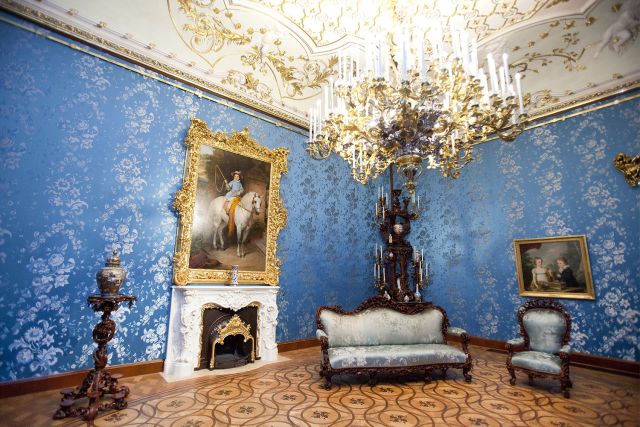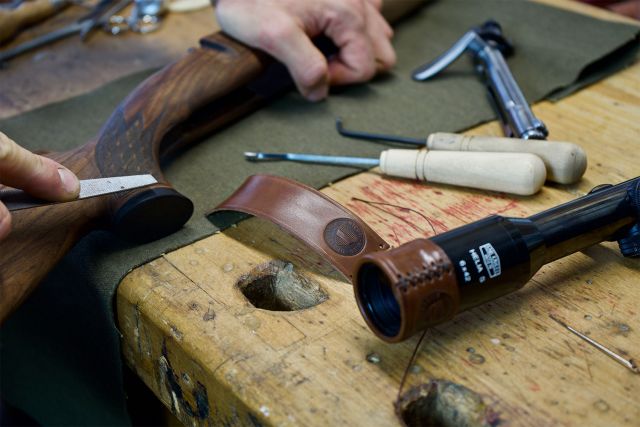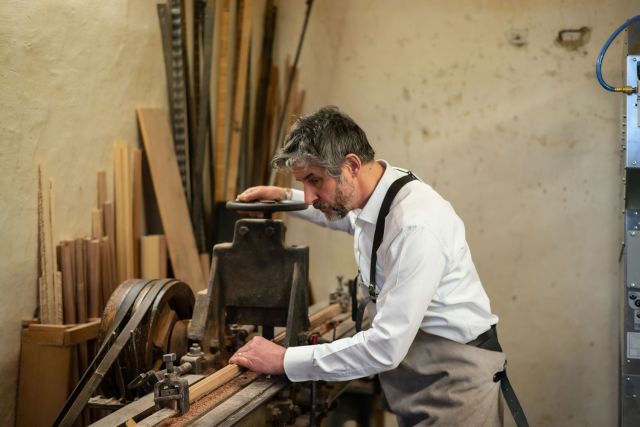This porcelain vase was shaped on a potter’s wheel and the exterior decorated with an oxblood glaze. The distinctive red hue is achieved when the infused copper component is deprived of oxygen during the final reduction gas firing at 1250°C then re-oxidised during cooling; this technique makes it one of the most difficult glazes to master.
Height 20 cm
Diameter 16 cm
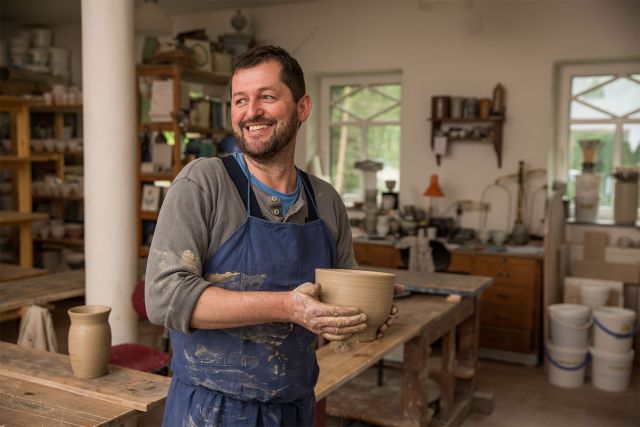
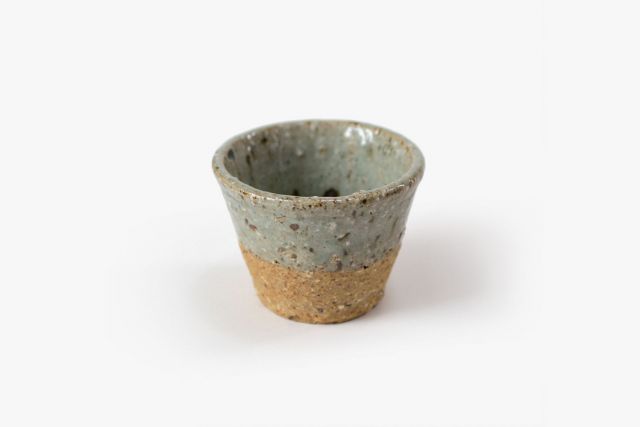
 03_Kachelofenentstehung_Aufgarnieren_(c)Manfred-Horvath.jpg.jpeg)
 03_Tonaufbereitung_Tonschlaemmen_(c)Manfred-Horvath.jpg.jpeg)
 01_Kachelofenentstehung_Simsziehen_(c)Manfred-Horvath.jpg.jpeg)
Josef Wieser
- Naturlehmkeramiker Josef Wieser
- Ceramicist
- Waidhofen an der Ybbs, Austria
- Master Artisan
- Recommended by Meisterstrasse Handmade
By appointment only
+43 7442540 91
Painting vessels with fire
- • Josef creates his own kilns to fire his work
- • His vessels are naturally glazed by the fire
- • He loves working in a field of endless possibilities
When he was a 12-year-old boy, an acquaintance showed Josef Wieser how to build his first furnace and shared a book by potter Bernard Leach, sparking his first experiments with ceramics. Unable to find an apprenticeship in ceramics, Wieser went on to become one of the rare ceramicists qualified as a hafnermeister, a certified builder of tile stoves. He has been firing pottery and building kilns for over 20 years. His proudest achievement to date is his woodburning Anagam stove, which allows him to produce highly textured flameware. The unique vessels he creates were awarded the Kunsthandwerkspreis of Salzburg in 2002.
Read the full interviewWorks
Photo: © Josef Wieser

Photo: © Josef Wieser
Josef turned this ochre stoneware vessel on a potter’s wheel, and heavy ash was used to create the decorative glaze. The pot was fired in an anagama kiln at 1280°C. This type of kiln was brought to Japan from China in the 5th century; it consists of a firing chamber at one end, with a flue and chimney at the other.
Height 16 cm
Diameter 12 cm

Photo: © Josef Wieser
A brown and yellow vase of kaolin clay shaped on a potter’s wheel and fired in an anagama, or cave, kiln. This ancient potter’s kiln originated in China and Korea in the 5th century and was brought to Europe from Japan. The vase was covered with ash and coarse quartz inclusions before being fired at 1300°C.
Height 19 cm
Diameter 10 cm

Photo: © Josef Wieser
A brown and yellow vase of kaolin clay shaped on a potter’s wheel and fired in an anagama, or cave, kiln. This ancient potter’s kiln originated in China and Korea in the 5th century and was brought to Europe from Japan. The vase was covered with ash and coarse quartz inclusions before being fired at 1300°C.
Height 19 cm
Diameter 10 cm

Photo: © Josef Wieser
Josef used porcelain clay to handcraft this tea set comprising a yellow side-handled teapot and a sencha bowl. The kaolin was sourced in the Waldviertel (Forest Quarter) of Austria, and the set was fired in an anagama kiln at 1280°C.
Height 12 cm
Diameter 10 cm





